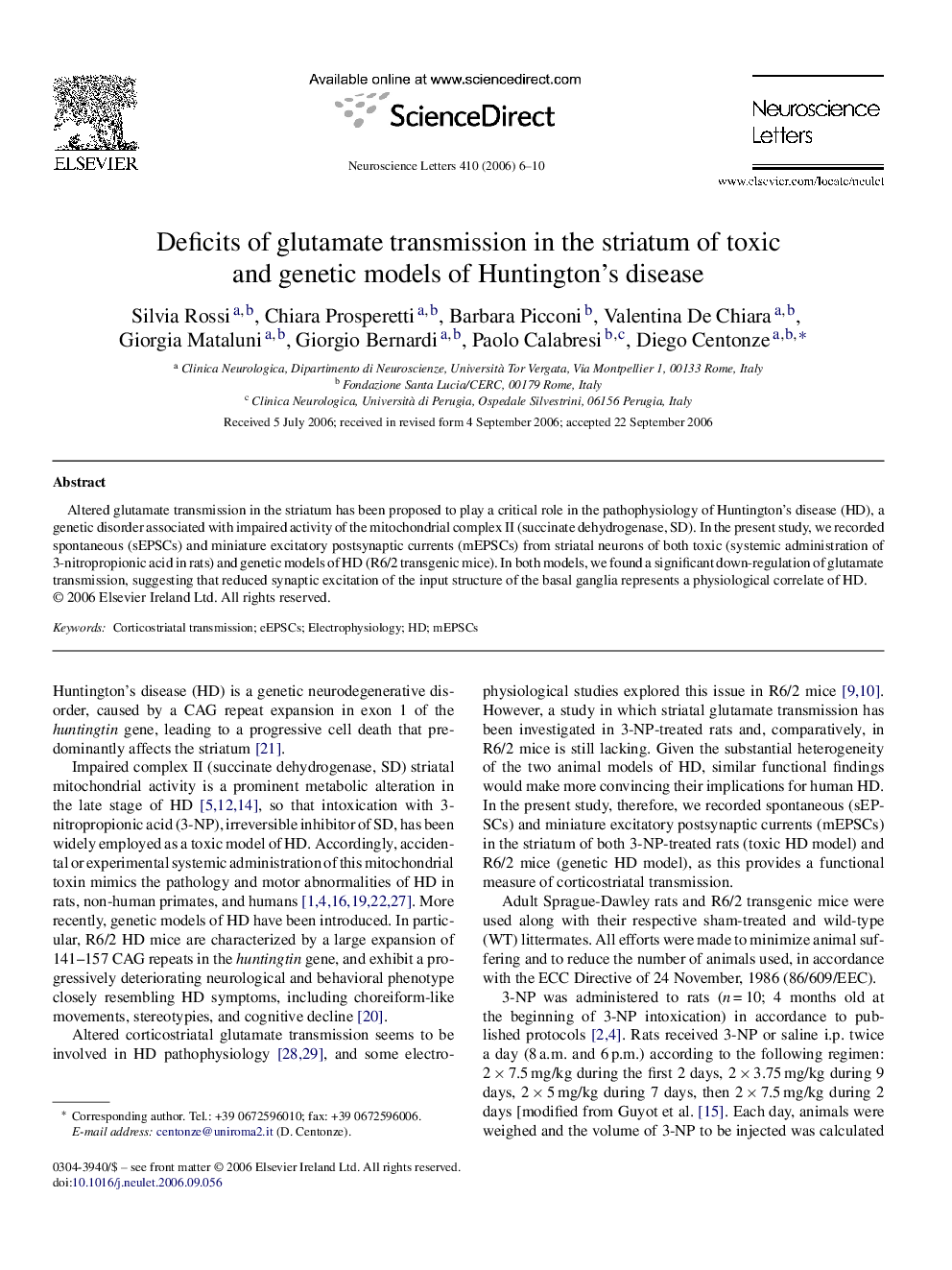| Article ID | Journal | Published Year | Pages | File Type |
|---|---|---|---|---|
| 4350322 | Neuroscience Letters | 2006 | 5 Pages |
Abstract
Altered glutamate transmission in the striatum has been proposed to play a critical role in the pathophysiology of Huntington's disease (HD), a genetic disorder associated with impaired activity of the mitochondrial complex II (succinate dehydrogenase, SD). In the present study, we recorded spontaneous (sEPSCs) and miniature excitatory postsynaptic currents (mEPSCs) from striatal neurons of both toxic (systemic administration of 3-nitropropionic acid in rats) and genetic models of HD (R6/2 transgenic mice). In both models, we found a significant down-regulation of glutamate transmission, suggesting that reduced synaptic excitation of the input structure of the basal ganglia represents a physiological correlate of HD.
Related Topics
Life Sciences
Neuroscience
Neuroscience (General)
Authors
Silvia Rossi, Chiara Prosperetti, Barbara Picconi, Valentina De Chiara, Giorgia Mataluni, Giorgio Bernardi, Paolo Calabresi, Diego Centonze,
